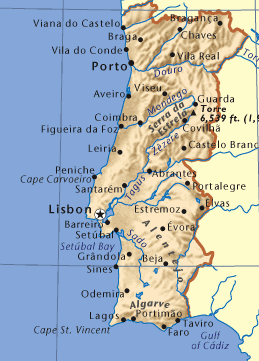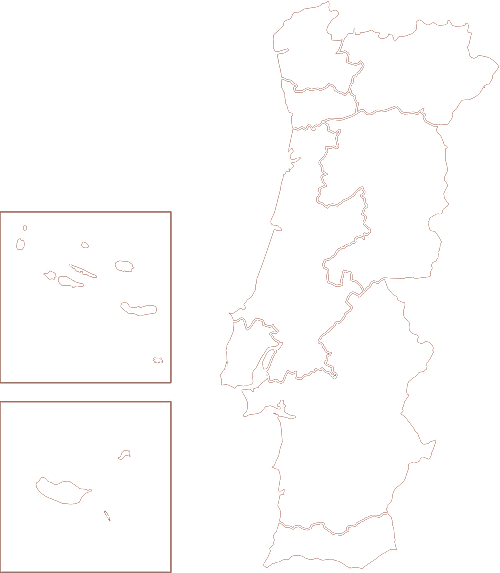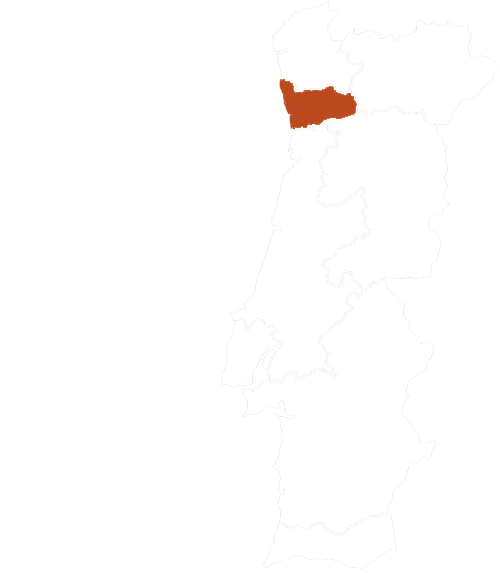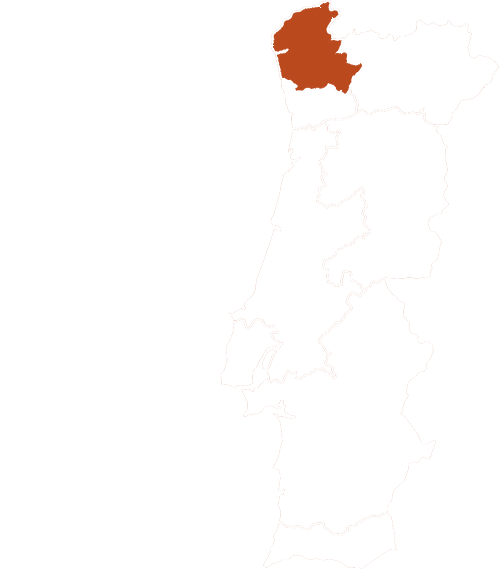Early arrival in Porto.
Porto is a charming town, situated on the slopes of the Douro River and very near to its mouth. It is classified as a UNESCO World Heritage Site thanks to its beautiful monuments and historic buildings such as the imposing Cathedral or the Tower of Clerics. Porto is the second largest city of Portugal and has superb views over the river.
The city provides a harmonious synthesis of ancient and contemporary attractions. Perched on hill tops and clinging to cliffs, the Douro River has been guarded by its attractive buildings, bridges and lamps for centuries. Fiercely proud of their heritage, the citizens of this merchant town have invested their blood and sweat on their commerce and wine. Nightclubs and restaurants mingle with cathedrals, churches and museums in narrow alleys and broad avenues. There are many cafes around the city, where you can relax after climbing the many hills of Porto. Porto is very compact, which makes it great to explore by foot, as long as you don't mind making an effort going uphill.
You will also enjoy a Rabelo Boat Ride (boat used to transport the wine from the Douro Valley to the city of Porto) on the Douro River, through the six bridges of the city, which is the perfect way to enjoy some beautiful city views and to know a little of its history in a different way; after all, the river held a key role in the local development over centuries. The D. Maria Bridge, built in 1886 by Eiffel, stands out. The boat leaves us on the edge of Gaia, where there are several Port Wine Cellars.
Port Wine is a world famous fortified wine, produced exclusively from grapes grown in the Douro Wine Region, about 100 km east of Porto. The wine took the name of Porto, but its cellars are actually located on the opposite bank of the Douro River, in Gaia. The cellars are long cool, dark warehouses, their thick granite walls and high ceilings helping to keep out the heat and maintain an even temperature throughout the year. Your cellar visit includes tastings different varieties of this delicious wine.
At the end of the afternoon head to Viana do Castelo, with your driver or rental car.
Located near the mouth of the Lima River, 65 km north of Porto, Viana do Castelo was founded in the 13th century by Afonso III, King of Portugal, under the name of Viana da Foz do Lima. From the shipyards of Viana, ships and caravels have left to India and the Americas. By the 16th century, the town was solely of the people, with the nobility not being able to settle here. Finally opening its doors, Viana enriched itself with emblazoned palaces, convents, churches and fountains that make up a remarkable patrimonial heritage, worthy of a visit. A beautiful city, outgoing and cheerful, Viana do Castelo has been able to preserve its rich tradition of popular roots.
Accomodation in one of our suggested Luxury, Premium or Boutique Hotels.
This morning you can visit The Temple of Santa Luzia, where you can enjoy a unique view of the region, which combines the sea, the river Lima with its valley, and the whole mountain complex - one of the best panoramic views in the world, according to National Geographic. This church was designed by architect Miguel Ventura Terra, with obvious inspiration from the Basilica of Sacre Coeur in Montmartre, Paris. With a plant in the form of a Greek cross, its architecture has Neo-Romanesque, Byzantine and Gothic elements.
You can enjoy a walk through the city.
The festivities in honor of Our Lady of Agony are the most popular and lively around all of the North of Portugal. They take place in the third week of August and include several parades with many traditional figures such as Gigantones, Zés-pereiras, floats and a diverse choice of regional costumes, enriched by the traditional gold jewellery worn by the women - necklaces, filigran earrings and gold bracelets. This is considered one of the most important pilgrimage festivities in Portugal.
The cult of Our Lady of Agony goes back to the 18th century, with the first written reference to this event dating from 1744. Its essential trait is the devotion of the people to the sea, and the graces received during storms or shipwrecks. Hence the main float was traditionally carried by fishermen and only since 1968 a fluvial procession began to take place, with the image of the saint, up the Lima River. On the closing evening of this festival, the fireworks, launched by the river, are a unique show.
Throughout the entire day there will be countless activities and parades to enjoy. The Historical and Ethnographic Parade takes place on the main avenue, and the parade of costumes and stewardship goes through several city streets. These streets are identified by the elaborate quilts that are hung on the balconies of the inhabitants.
You can't leave without tasting the fried pastry Bola de Berlim from the Natário Bakery, known as the best in Portugal.
At midnight don’t miss the fireworks on the city bridge.
Accomodation in one of our suggested Luxury, Premium or Boutique Hotels.
Throughout the morning and before the Procession to the Sea begins, you can appreciate the painstaking and dedicated work of the people of Ribeira through a number of cobble stone streets. They are decorated, during the entire evening, with colored salt, that resemble full carpets, depicting different activites and patterns. This shows the people’s true devotion to Our Lady of Agony.
After the procession you can head to Ponte de Lima, a rich agricultural region, where the famous Green Wine is produced. Ponte de Lima’s heritage includes a large number of manor houses and stately homes.
Return to Porto for your flight home.








